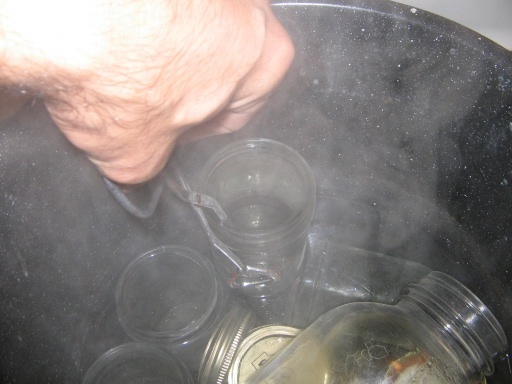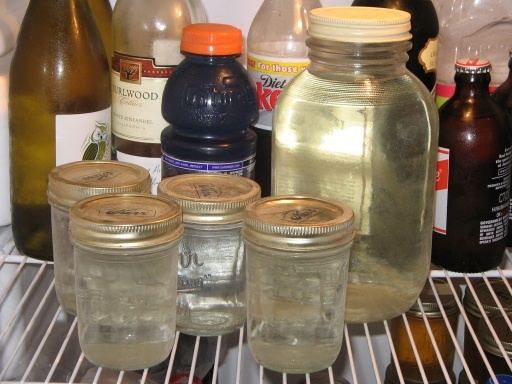sok454 said:Notty only got it to 1.048 from 1.115. S-05 toolkit to 1.034. Probably wont wash as I'm sure the yeast is worn out!!
Lol yea that stuffs been nuked.

sok454 said:Notty only got it to 1.048 from 1.115. S-05 toolkit to 1.034. Probably wont wash as I'm sure the yeast is worn out!!
3 questions on this -
#1 - I brewed a porter and an IPA and for both batches the guys at HBS told me to pitch a packet of dry yeast with the smack pack, so I did. Is that a common practice to get enough yeast?
#2 - I used 1056 and Safale US-05. is the Safale like a 'generic' ale yeast that can mix with other ale yeasts? Does it make a difference using two varieties?
#2 - I want to start washing yeast - is having two varieties any issue for this?
TangoHotel said:When reusing, brew a similar beer with the yeast. Using the washed porter yeast in a pale ale might give it some porter characteristics. Which might not be a bad thing...again, that's the beauty of the hobby. It allows you to tinker with recipes and create something that you can say "I did that!"
I used washed yeast from a stout to make an IPA about 2 months ago. There wasn't any flavor or anything that carried over into the IPA so I wouldn't worry about using washed yeast for a different style.


![Craft A Brew - Safale S-04 Dry Yeast - Fermentis - English Ale Dry Yeast - For English and American Ales and Hard Apple Ciders - Ingredients for Home Brewing - Beer Making Supplies - [1 Pack]](https://m.media-amazon.com/images/I/41fVGNh6JfL._SL500_.jpg)









tre9er said:Even without washing there isn't really a whole lot of flavor in the trub that will remain in the beer. It's just going to settle out again and it's hitting the beer cold, so don't think you're getting much flavor from it. I've never noticed much, if any difference using repitches.
bzwyatt said:3 questions on this -
#1 - I brewed a porter and an IPA and for both batches the guys at HBS told me to pitch a packet of dry yeast with the smack pack, so I did. Is that a common practice to get enough yeast?
#2 - I used 1056 and Safale US-05. is the Safale like a 'generic' ale yeast that can mix with other ale yeasts? Does it make a difference using two varieties?
#2 - I want to start washing yeast - is having two varieties any issue for this?
mtnagel said:Have you checked he gravity?
While I only harvest from starters now (signature for link), I couldn't agree more with this.
KeyWestBrewing said:That's fine for sanitizing everything. Boiling the water is mainly done to drive the oxygen out to help the yeast go dormant.
It seems to me that there have been quite a few inquiries about yeast washing lately, so since I was racking/washing today, I grabbed the digital camera to illustrate one way of doing it. I have had great success with this method, so I thought I'd share. Here goes:
The only materials that I use besides regular racking equipment is this:
4 pint sized Mason jars w/lids
1 larger container for extra water
1 kitchen tongs
My old boiling kettle from my original brewing kit.
I put all the stuff- lids and all- in the pot and add enough water to cover it:

Boil it for about 20 minutes or so. This will sanitize everything as well as get rid of any oxygen in the water, so the yeasties will take a nice long nap. Then remove the jars and lids with the tongs, keeping them full of water.

Cover all the jars and let cool in the fridge for several hours, or maybe overnight.

doomXsaloon said:I've been using this method for about 5 batches now; it's great! I've been very successful, even with the mighty Conan! Thank you!
My question...do I need to make a starter? Could I pitch one or even two pint size mason jars (about a half inch on bottom) right into the wort?
Potential infection and oxidation from exposing yeast are the only things I can think of..
There is one thing that puzzles me about this process: what is the point of keeping 4 mason jars in the fridge when you could just open them after a couple of days (once the yeast has formed a nice layer at the bottom) and dump most of the excess water. Swirl with the little bit of water you leave in the jar (just to stir up the yeast at the bottom) and pour the content of the mason jars into one. Less space, 3 empty jars to wash more yeast, and you will need all the slur eventually for a 5-gallon batch (if you dont make a starter).
Any ideas if this would be a good idea to do (or good practice)?
There is one thing that puzzles me about this process: what is the point of keeping 4 mason jars in the fridge when you could just open them after a couple of days (once the yeast has formed a nice layer at the bottom) and dump most of the excess water. Swirl with the little bit of water you leave in the jar (just to stir up the yeast at the bottom) and pour the content of the mason jars into one. Less space, 3 empty jars to wash more yeast, and you will need all the slur eventually for a 5-gallon batch (if you dont make a starter).
Any ideas if this would be a good idea to do (or good practice)?
unionrdr said:. But the kicker is,I just used water with a few ounces of Starsan added to it in the washing jar.
They went into the fridge for 3 days with no ill effects. The last two jars had too much trub from the bottom of the yeast column above the settling trub. So I'm re-washing them now with the same proceedure. Sanitizing the water with a little Starsan seems to work just fine. No mold or anything.